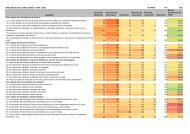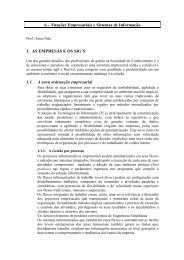Create successful ePaper yourself
Turn your PDF publications into a flip-book with our unique Google optimized e-Paper software.
What's particularly nice about this mode of operation is that the end-user hosts<br />
generally know nothing about the VPN or other security measures in place. Since<br />
a VPN implemented by a gateway device treats the VPN as yet another interface,<br />
traffic destined for the other end is routed normally.<br />
This packet-in-a-packet can actually be nested yet more levels: Host A and Host<br />
B can establish their own authenticated connection (via AH), and have this<br />
routed over the VPN. This would put an AH inner packet inside an enclosing<br />
ESP+Auth packet.<br />
Update - it's important to use authentication even if encryption is used, because<br />
encrypt-only implementations are subject to effective attack as described in the<br />
paper Cryptography in Theory and Practice: The Case of Encryption in IPsec; see<br />
the Resources section for more information.<br />
Touching on Other Matters<br />
IPsec is a very complex suite of protocols, and this Tech Tip cannot possibly give<br />
proper justice to more than a small part of it. In this section we'll mention a few<br />
areas that beg for more coverage.<br />
Security Associations and the SPI<br />
It seems self-evident that if two endpoints or gateways are going to establish a<br />
secure connection, some kind of shared secret is required to seed the<br />
authentication function and/or key the encryption algorithm. The matter of just<br />
how these are secrets are established is a substantial topic to be addressed<br />
elsewhere, and for the purposes of this discussion we shall just assume that the<br />
keys have magically landed where they belong.<br />
When an IPsec datagram — either AH or ESP — arrives at an interface, just how<br />
does the interface know which set of parameters (key, algorithm, and policies) to<br />
use? Any host could have many ongoing conversations, each with a different set<br />
of keys and algorithms, and something must be able to direct this processing.<br />
Unsure!<br />
It's been pointed out that the SADB only uses the protocol type and SPI to select<br />
an entry, not the partner IP address; we simply don't know.<br />
This might depend on whether the association is configured with main mode or<br />
aggressive mode, but we welcome clarifications.<br />
This is specified by the Security Association (SA), a collection of connectionspecific<br />
parameters, and each partner can have one or more Security<br />
Associations. When a datagram arrives, three pieces of data are used to locate<br />
the correct SA inside the Security Associations Database (SADB):<br />
• Partner IP address













![Plano de Contabilidade Social 2013[1].pdf - FESP](https://img.yumpu.com/40657716/1/184x260/plano-de-contabilidade-social-20131pdf-fesp.jpg?quality=85)



